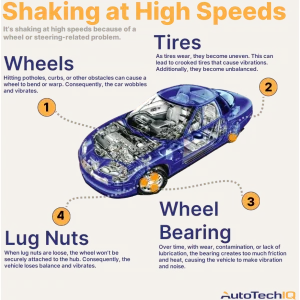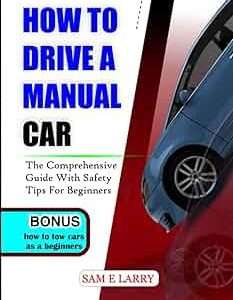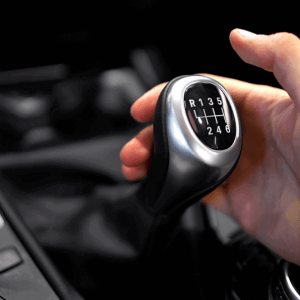Are you looking for a new car with a manual transmission? They are becoming increasingly rare. But don’t worry, some manufacturers still offer them. It’s a great way to stay connected to the driving experience.
Here’s a list of some popular models that often come with a manual option:
- Mazda MX-5 Miata
- Honda Civic Si/Type R
- Subaru WRX
- Toyota GR86 / Subaru BRZ
- Nissan Z
This list is not exhaustive. Availability can change quickly. Always check with your local dealer.
Why Choose a Manual Transmission?
Manual transmissions offer a unique driving experience. They provide more control. They also offer a greater sense of engagement.
Here are some benefits:
- Greater control over gear selection.
- More engaging driving experience.
- Potentially better fuel economy (in some cases).
- Often lower purchase price.
FAQ: Manual Transmissions
Are manual transmissions more fuel-efficient?
It depends. In the past, they often were. Modern automatics are very efficient. The difference is often negligible.
Are manual transmissions harder to learn?
There is a learning curve. It takes practice. Many people find it rewarding.
Will manual transmissions disappear completely?
It’s possible. Demand is decreasing. Some manufacturers are phasing them out. Enthusiasts hope they will remain available.
The Future of Manual Transmissions
The automotive landscape is rapidly evolving. Electric vehicles (EVs) are gaining popularity. Autonomous driving technology is advancing. These trends pose a significant challenge to the future of manual transmissions. EVs, by their nature, do not require multi-gear transmissions. Autonomous vehicles prioritize efficiency and safety, often relying on sophisticated automatic systems.
However, a dedicated community of driving enthusiasts remains. They value the tactile feedback and control offered by manual transmissions. This niche market may sustain the production of manual cars for years to come. Limited production runs and specialized models could become the norm.
Maintaining a Manual Transmission Vehicle
Owning a car with a manual transmission requires some specific maintenance considerations. Regular fluid checks are crucial. Clutch wear is a factor to monitor. Proper shifting technique can significantly extend the lifespan of the clutch.
Here are some key maintenance tips:
- Check and replace transmission fluid according to the manufacturer’s recommendations.
- Be mindful of clutch slippage. Avoid riding the clutch unnecessarily.
- Ensure proper cable or linkage adjustment for smooth shifting.
- Listen for unusual noises. Address any issues promptly.
Neglecting these maintenance aspects can lead to costly repairs. A proactive approach is essential for preserving the performance and longevity of your manual transmission.
More FAQs: Manual Transmissions
What is “rev matching”?
Rev matching is a technique used to synchronize engine speed with wheel speed during downshifts. It involves briefly increasing the engine RPM before engaging the clutch. This results in smoother gear changes and reduces wear on the drivetrain.
Is it okay to rest my hand on the gear shift lever while driving?
It’s generally not recommended. Applying pressure to the shift lever can cause premature wear on the internal components of the transmission. It’s best to keep your hand off the lever unless you are actively shifting gears.
Can I convert an automatic car to a manual transmission?
While technically possible, it’s a complex and expensive undertaking. It requires significant modifications to the vehicle’s drivetrain, electronics, and interior. The cost often outweighs the benefits. It’s usually more practical to purchase a car that already comes with a manual transmission.
Beyond the Basics: Advanced Manual Transmission Techniques
Mastering the manual transmission goes beyond simply shifting gears. Techniques like heel-toe downshifting and left-foot braking can significantly enhance driving performance, particularly on the track or in spirited driving situations. These techniques require practice and coordination, but they offer a level of control and precision that is unmatched by automatic transmissions.
Heel-toe downshifting involves using the heel of your right foot to blip the throttle while simultaneously braking with the ball of your foot. This smooths out downshifts and prevents unsettling the car’s balance. Left-foot braking, on the other hand, allows you to maintain partial throttle while braking, which can be useful for controlling understeer or oversteer.
Learning these advanced techniques can elevate your driving skills and provide a deeper appreciation for the art of manual transmission driving. However, it’s crucial to practice in a safe and controlled environment before attempting them on public roads.
Even More FAQs: Manual Transmission Troubleshooting
My manual transmission is hard to shift into gear. What could be the problem?
Difficulty shifting can stem from several issues. Low transmission fluid is a common culprit. A worn clutch, damaged synchronizers, or a misaligned shift linkage can also contribute to the problem. It’s best to have a qualified mechanic diagnose the issue.
My clutch pedal feels spongy or doesn’t return properly. What’s going on?
A spongy clutch pedal often indicates air in the hydraulic clutch system. Bleeding the system can resolve this issue. A failing clutch master cylinder or slave cylinder can also cause similar symptoms. A broken clutch cable (in older vehicles) is another possibility.
I hear a grinding noise when shifting gears. What does that mean?
Grinding noises during shifting usually point to worn synchronizers. Synchronizers are responsible for matching the speeds of the gears before they engage. When they wear out, they can’t effectively synchronize the gears, resulting in a grinding sound. This typically requires a transmission rebuild or replacement.
The Social Aspect: The Manual Transmission Community
Owning a car with a manual transmission often connects you to a passionate community of driving enthusiasts. Online forums, car clubs, and track days provide opportunities to share experiences, learn from others, and celebrate the unique joys of manual transmission driving.
This community is united by a shared appreciation for the tactile feedback, control, and engagement that manual transmissions offer. They often organize events and advocate for the preservation of manual transmissions in the automotive industry.
Joining this community can enhance your ownership experience and provide valuable support and resources. It’s a great way to connect with like-minded individuals and deepen your passion for driving.




